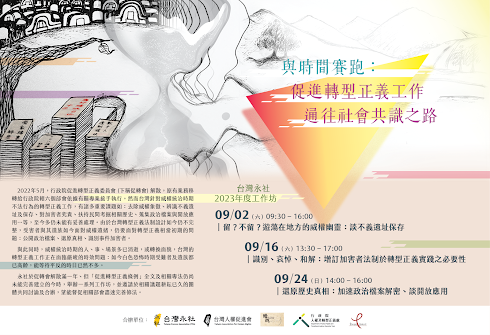Wu Ching-chin 吳景欽
(Wu Ching-chin is an associate professor, chair of Aletheia University’s law department and director of Taiwan Forever Association)
(作者為真理大學法律系副教授兼系主任、永社理事)
Translated by Ethan Zhan
TAIPEI TIMES / Editorials 2015.05.15
http://www.taipeitimes.com/News/editorials/archives/2015/05/15/2003618300
After investigating the Taipei Dome project, the Taipei Clean Government Committee recommended that the Taipei City Government report President Ma Ying-jeou (馬英九) to the district prosecutors’ office for allegedly illegally profiting Farglory Land Development Co (遠雄建設). It seems that the new city government has shown its determination to fight corruption.
However, in the case of the Taipei Dome, can Ma really be convicted of profiteering?
Ever since the contract for the Taipei Dome was signed, there have been numerous contract revisions and design revisions, turning a sports cultural park for the public to use into a profit-oriented commercial center. Ma, who was Taipei mayor when the contract was initially signed, will find it difficult to clear himself of suspicions of illegally profiting Farglory.
Nonetheless, according to Article 6 of the Anti-Corruption Act (貪污治罪條例), people can only be convicted of illegal profiting — and imprisoned for a minimum of five years — if they were aware that their acts were illegal and that they had illegally profited an individual, either directly or indirectly, resulting in that individual’s profit.
Hence, even if Ma’s administration made numerous concessions to Farglory, including reducing royalties to zero and allowing Farglory to add more department stores and office buildings to the construction project, the Act for Promotion of Private Participation in Infrastructure Projects (促進民間參與公共建設法) stipulates that the authorities should give tax incentives and financing benefits to the successful bidder, and since the law is quite loose on how many benefits can be given, it is debatable whether those numerous profiting acts can be regarded as conscious violations of the law.
People can only be charged with illegal profiting if they have actually profited someone. However, the construction and operation costs of the Taipei Dome are extremely high and the huge business opportunities after the facility starts operation exist only in potential. Moreover, this case could end up in a drawn-out lawsuit, leaving the Taipei Dome in ruins. Therefore it is highly debatable if the requirements for convictions of illegal profiting will be sound.
In addition, administrative decisions had to be approved by government officials on many levels, which means that many officials would have been involved. Buck passing can be expected and conviction will be difficult.
The success rates of convicting people of illegal profiting have never been higher than 30 percent. The difficulty of holding people liable for the Taipei Dome project highlights the shortcomings of the law. Especially since the requirements in law are unclear, it is difficult to distinguish between acts intended for illegal profiting and acts intended to serve the public. If this law is widely used by prosecutors to charge people, malicious prosecutions are likely to occur. Consequently, public servants will hesitate to serve the public.
Due to the obscurity of regulations on this offense and the difficulty of obtaining convictions, if prosecutors are slow to investigate and collect evidence, as is the case with the Taipei Dome, on which prosecutors are doing absolutely nothing, then under the principles of no penalty without a law and in dubio pro reo, or “when in doubt,” for the accused, as practiced in criminal trials, it is easy for public servants who violate the law and abuse their position to escape penalty.
If that is so, the Anti-Corruption Act and the many anticorruption agencies that have been created, as well as the UN Convention against Corruption recently ratified by the legislature, will only pay lip service to fighting graft.


